Mirror of the World is an exhibition in the Library’s Dome Galleries that explores humankind’s relationship with books, from prehistory to the present day, and where better to start our celebration of this exhibition than with a storybook…
Tutinama (Book of the parrot)
Ziya al-Din Nakhshabi (died 1350)
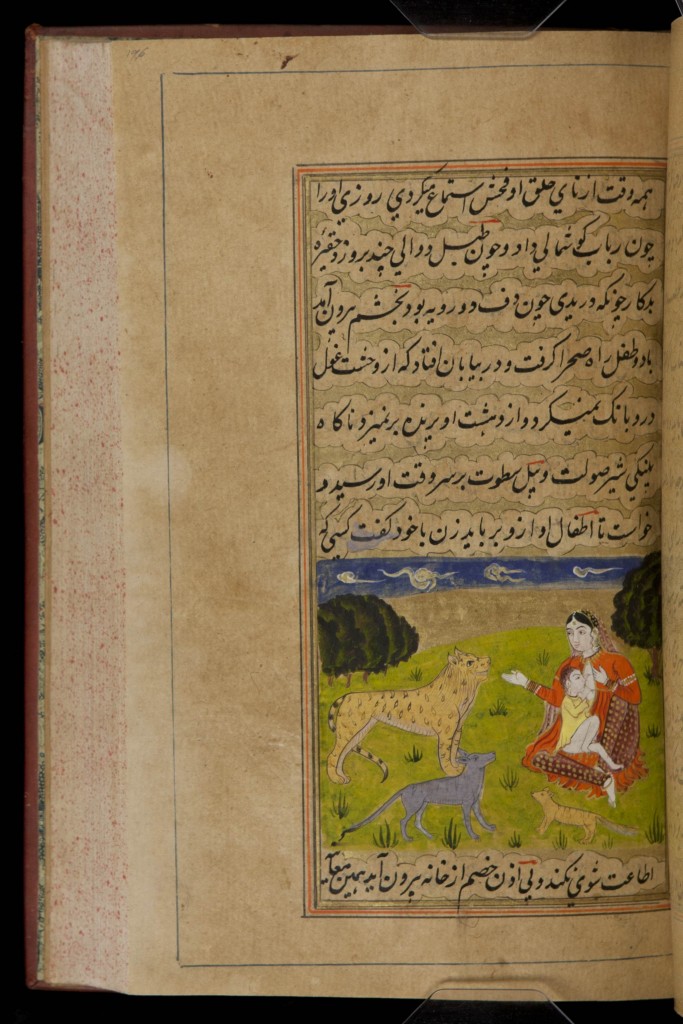
Tutinama (Book of the parrot). Manuscript copied 1808–09; RARESF 745.670954 N14T
Fables involving animals considered models of exemplary human behaviour were popular in the Persian world. These included the Tutinama, or ‘Book of the parrot’, a story of family honour that originated in India in the 14th century. A clever parrot entertains a travelling merchant’s wife with stories so enthralling they distract her from going out to meet her lover. Complete manuscripts of the Tutinama are rare, and this one, copied in India in the 19th century, is richly illustrated with 110 miniature paintings.
Mr William Shakespeares comedies, histories, and tragedies. Published according to the true originall copies, the second impression
William Shakespeare (1564 – 1616)
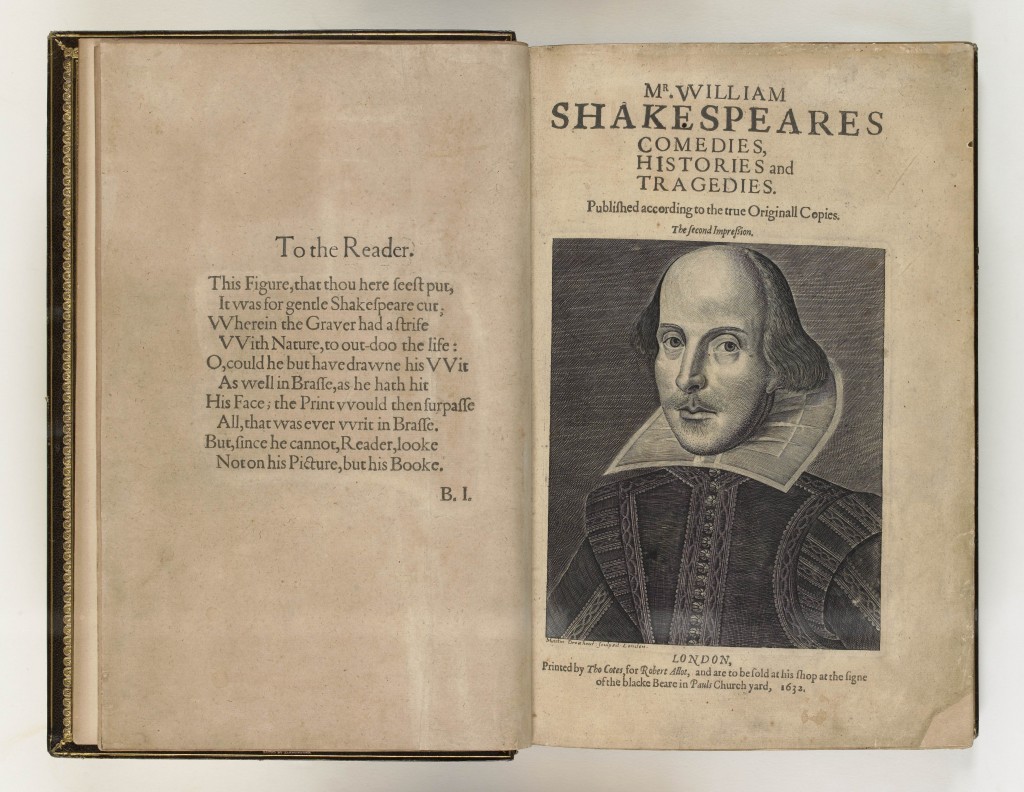
Mr William Shakespeares comedies, histories, and tragedies. Published according to the true originall copies, the second impression. London, Tho. Cotes for Robert Allot, 1632; RARESF 822.33 AZ
In the 400 years since his death, William Shakespeare has inspired, delighted, puzzled and entertained generation after generation. It’s hard to imagine a world without his writing, but we only know his plays because of the dedication of his theatrical colleagues. The First Folio of Shakespeare’s plays was published in 1623, seven years after his death. It was compiled, from unauthorised versions, by two actors of the King’s Company of Players, John Heminge and Henry Condell. For many of Shakespeare’s plays it remains the only source. This Second Folio (1632) included John Milton’s first published poem ‘An Epitaph on the admirable Dramaticke Poet, W. SHAKESPEARE’, which appeared anonymously. The well-known portrait of Shakespeare, included as a frontispiece, was made by artist Martin Droeshout.
The History of Don Quixote, vols 1 and 2
Miguel de Cervantes (1547 – 1616)

The History of Don Quixote, vols 1 and 2. London, printed for Edward Blount, 1620. John Emmerson Collection
This year is the 400th anniversary of Miguel de Cervantes’ death. Published in two parts in 1605 and 1615, Cervantes’ tale of the delusional ‘man of La Mancha’ is a seminal work in the canon of Western literature. Obsessed with chivalric romances, a Spanish nobleman believes himself to be a knight errant and sets out on numerous quests with his simple, good-hearted servant, Sancho Panza. The tragicomedic narrative laments the demise of chivalry, as Don Quixote tilts at windmills, falls in love with a peasant girl he mistakes for a princess, and ultimately perishes of a fever, a broken man. This edition is the first full English translation.
Gleanings of Natural History
George Edwards (1694 – 1773)
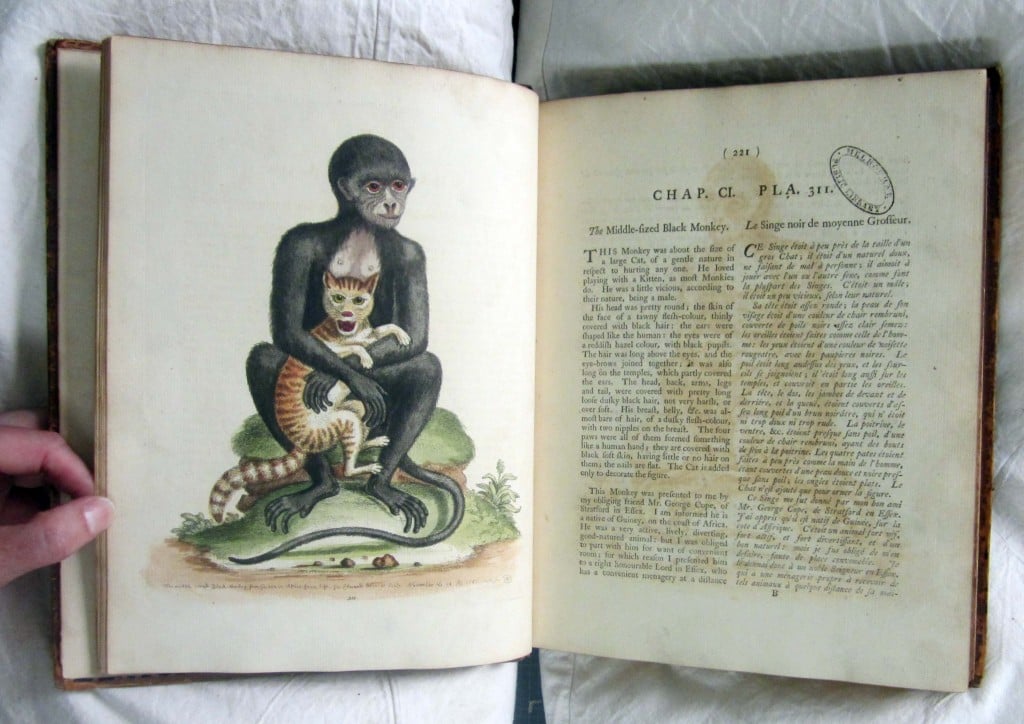
Gleanings of Natural History. London, printed for the author at the Royal College of Physicians, 1758–64; RARESF 590 ED9
A contemporary and friend of Carl von Linné (the Swedish naturalist and inventor of modern taxonomy), Englishman George Edwards is often described as the father of British ornithology. After studying natural history and travelling extensively throughout Europe, Edwards gained the post of librarian for the Royal College of Physicians in London. A keen artist, Edwards published descriptions and illustrations of previously undescribed birds in 1743 as A Natural History of Uncommon Birds. Three supplementary volumes followed as Gleanings of Natural History, which included creatures other than birds, such as this cat-loving Middle-sized Black Monkey, one of the many whimsical monkeys that Edwards drew.
Nürnbergische Hesperides
Johann Volkamer (1662 – 1744)

Nürnbergische Hesperides. Nuremberg, the author, 1708–14; RARESF 634.3 V88
It’s Autumn in Melbourne and the flu season is well underway – in kitchens everywhere, hot lemon drinks are brewed to ward off the worst symptoms. Citrus fruits probably originated right here in Australia and the South Pacific region. They were first domesticated in Asia, and were brought to Europe via trade routes in era of Alexander the Great. By the 17th century, it was highly fashionable among the aristocracy in Europe to grow citrus fruits. During winter, the plants were housed in specially built glasshouses, or ‘orangeries’, and then moved outdoors during summer. The term ‘Hesperides’ was often used to refer to citrus at this time. Drawn from Greek mythology, it alluded to the golden apples guarded by the Nymphs of the Sunset Hesperides. Volkamer’s detailed depictions of prize fruits float rather incongruously above the formal European estates and houses where they were grown.
Little Aches and Pains
David Frazer, artist (born 1966), Paul Kelly, lyricist (born 1955) and George Matoulas, binder (born 1966)
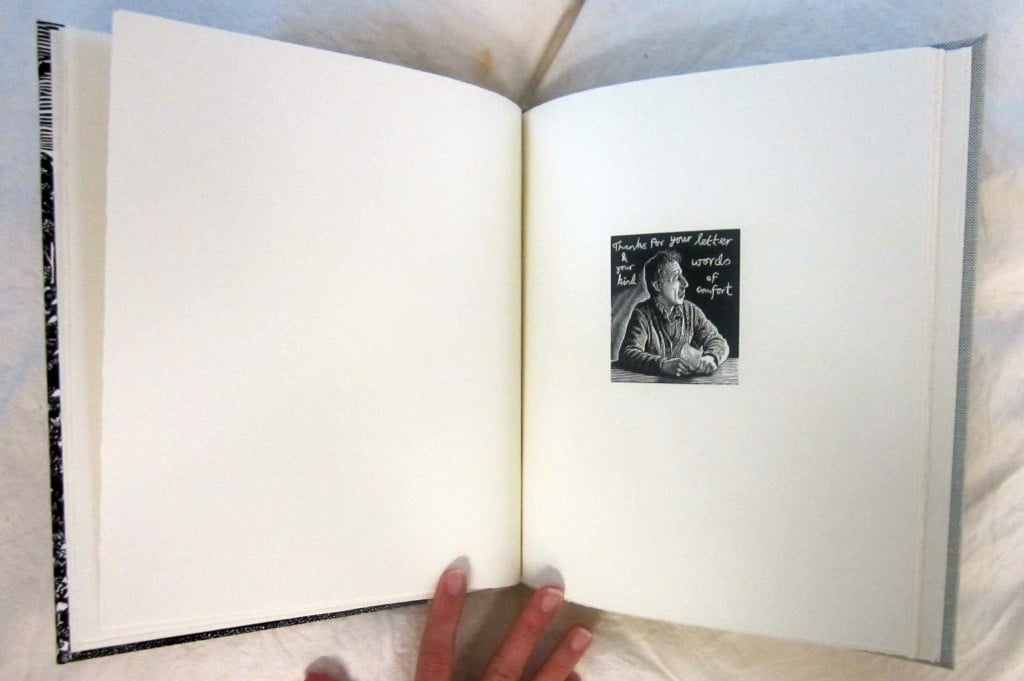
David Frazer, artist (born 1966), Paul Kelly, lyricist (born 1955) and George Matoulas, binder (born 1966), Little Aches and Pains. Castlemaine, UnStable Press, 2014; RARELT 702.81 F86LI
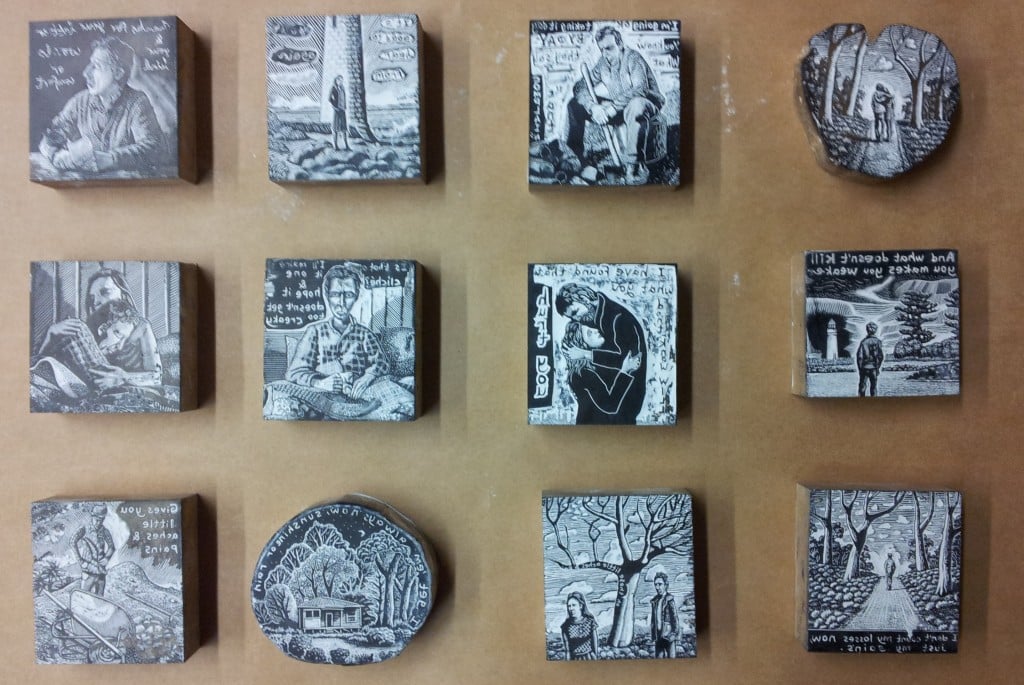
David Frazer, artist (born 1966), Paul Kelly, lyricist (born 1955) and George Matoulas, binder (born 1966), Little Aches and Pains. Castlemaine, UnStable Press, 2014; RARELT 702.81 F86LI
Mirror of the world celebrates the book across the ages, from the ancient to the avant-garde. Little Aches and Pains (2014) is a collaborative Australian artists’ book that unites the lyrics of renowned singer-songwriter Paul Kelly with the melancholy wood engravings of David Frazer. It’s housed in a bespoke binding by artist and binder George Matoulas. Frazer’s prints respond to the lyrics of Kelly’s 2012 song ‘Little Aches and Pains’, a bittersweet reflection on lessons learned over the course of a life. The book was published by Frazer’s UnStable Press, using a Columbian platen press from the 1850s. The library’s copy is number one of the 20 in the edition. Also on display in Mirror of the World are the English boxwood blocks used to print the book’s images.
—
The Mirror of the world exhibition, now named World of the book, showcases the history of book design, production and illustration from the Middle Ages to today. Open daily, it celebrates the unique place books have in our hearts and minds.

